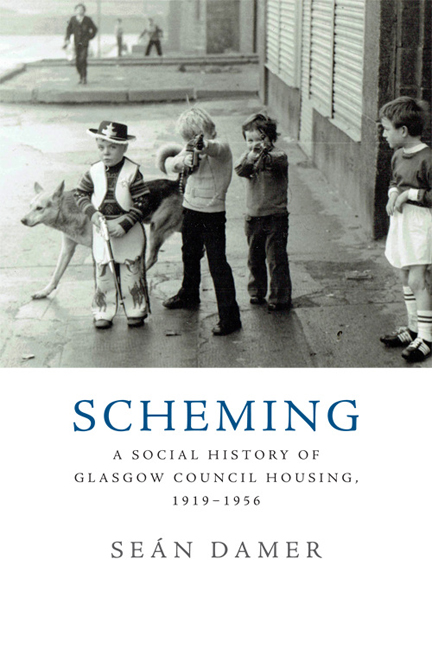Book contents
- Frontmatter
- Dedication
- Contents
- List of Tables and Figures
- Acknowledgements
- Preface
- 1 Introduction
- 2 Mosspark: Homes Fit for Heroes?
- 3 Hamiltonhill: A Pioneering Slum-Clearance Scheme
- 4 West Drumoyne: Blue-Collarland
- 5 Blackhill: Out of the Slums
- 6 Craigbank: Amateur Dramatics?
- 7 South Pollok: ‘The Bundy’
- 8 Alarums and Excursions
- Appendix 1 Balloting for a Council House
- Appendix 2 Methodological Notes
- Bibliography
- Index
1 - Introduction
Published online by Cambridge University Press: 12 November 2019
- Frontmatter
- Dedication
- Contents
- List of Tables and Figures
- Acknowledgements
- Preface
- 1 Introduction
- 2 Mosspark: Homes Fit for Heroes?
- 3 Hamiltonhill: A Pioneering Slum-Clearance Scheme
- 4 West Drumoyne: Blue-Collarland
- 5 Blackhill: Out of the Slums
- 6 Craigbank: Amateur Dramatics?
- 7 South Pollok: ‘The Bundy’
- 8 Alarums and Excursions
- Appendix 1 Balloting for a Council House
- Appendix 2 Methodological Notes
- Bibliography
- Index
Summary
1919: The National Housing Situation
The 1919 Housing & Town Planning Act, the ‘Addison’ Act, placed a statutory duty on local authorities to survey the general working-class housing needs of their areas and submit development plans. Following the 1919 Tudor Walters Report, the Act laid down generous criteria for the design of this housing: they were generally to be four-in-a-block cottage-type dwellings, the smallest of which were to be of three apartments. The subsidy was equally generous: all losses not met from the revenue of a penny rate – 4/5th of a penny in Scotland – would be covered by the Treasury, provided the schemes had been approved by the Ministry of Health or, in Scotland, the Scottish Board of Health. However, these houses were to be let at an economic rent. The Act constituted legislation designed to respond to wartime labour agitation on housing issues, especially rents, and also end-of-the-war industrial unrest, particularly on Clydeside, mutinies among un-demobilised soldiers in the Army, a police strike and the threat of a General Strike. In Swenarton's telling phrase, it was an ‘insurance against revolution’. The state was not only responding to internal social unrest but also was mindful of the revolutionary activity in Russia, as the contemporary debates in the House of Commons make plain. It is hardly surprising that Lloyd George wanted half-a-million houses built in three years, a phenomenal target.
But although this housing was supposed to meet the ‘general needs’ of the working class, its generous design criteria made it expensive to build, resulting in high rents which were beyond the capacity of all but the most skilled workers. A consequence of the rushed nature of this Act was that it was ill-drafted and the subsidies ruinously expensive. It is hardly surprising that the 1923 ‘Chamberlain’ Act of the Tory government effectively tried to return the provision of working-class housing to the market, and, specifically, to ensure that council housing existed only in a ‘residual’ role. A central assumption was that the housing problem was a temporary one, and thus its subsidy ran only to October 1925. It was designed essentially to stimulate private enterprise construction, and so its subsidy for council housing, quite cynically slashed to £6 per house, was released only if it could be proved that private enterprise could not meet the demand for working-class housing.
- Type
- Chapter
- Information
- SchemingA Social History of Glasgow Council Housing, 1919-1956, pp. 1 - 9Publisher: Edinburgh University PressPrint publication year: 2017



